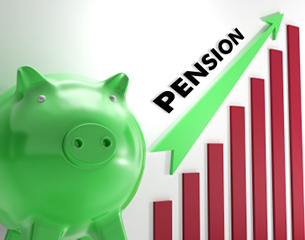Scheme members are more likely to increase the amount the save each month if pension providers improve their communications and employer offer to match contributions.
New analysis from Hargreaves Lansdown found that almost half of scheme members (49 per cent) who had increased monthly contributions had done so as a result of better communications. However this rises to 61 per cent when their employer offers to match in increase in contributions with a top up of their own.
The research found that if face-to-face guidance was also offered, around three out of four employees increased the amounts they paid into a pension.
The research examined the behaviour of nearly 53,000 workplace pension members using the Hargreaves Lansdown Workplace Pension.
All staff are auto-enrolled into their workplace pension at a certain level, this is determined by the employer but must at least meet the minimum set by Government. This research looked at cases where employees had actively sought to increase contributions above the minimum.
Hargreaves Lansdown found younger employee are most likely to increase monthly savings to take advantage of an employer match. Its research found atching boosts the likelihood of saving more by 33 per cent among under 30s, but by only 18 per cent in the over 50s.
However Hargreaves Lansdow says it believes this is because people are more likely to contribute more to their pension as they age anyway.
The research also showed and men respond better to this incentive than women.
With no incentive 49 per cent of women increase compared to 48 per cent of men. However introducing an incentive leads to 58 per cent of women and 64 per cent of men contributing more.
Hargreaves Lansdown senior analyst Nathan Long says: “The optimum level of workplace pensions contributions are like Goldilocks’ search for the perfect porridge. With pensions, too little going in and people don’t have enough to live on in retirement, too much and they won’t have enough to live on now; they might even just opt out.
“While debate rages on what the level should be, the Government should look to employers to incentivise higher contributions by offering to match additional contributions made by their employees. It’s an approach used by some employers already and is particularly effective at incentivising the under 30s to pay more in.”
The Government has been lobbied hard by the pension industry to increase contributions higher than the 8 per cent they now stand at. Many have called for the minimum to rise to 12 per cent.
In December 2018 the Government announced that from the ‘mid-2020s’ two changes would be made. This include the enrolment of employees from the age of 18 – currently the current level is 22. The Government has also pledged to ensure members would accrue pension contributions from the first pound earned in future. Currently the first £6,136 don’t attract a contribution.
Hargreaves Lansdown says these changes should boost the expected pension pot for an average earner at age 68 from £150,893 to £220,791.
Hargreaves Lansdown adds that the Government could explore mandating employers to offer a level of matching on top of the minimum auto-enrolment contributions to incentivise further saving. Long says that in doing so, the employer would be required to contribute more only for those employees who were committed to personally saving more for their future.
